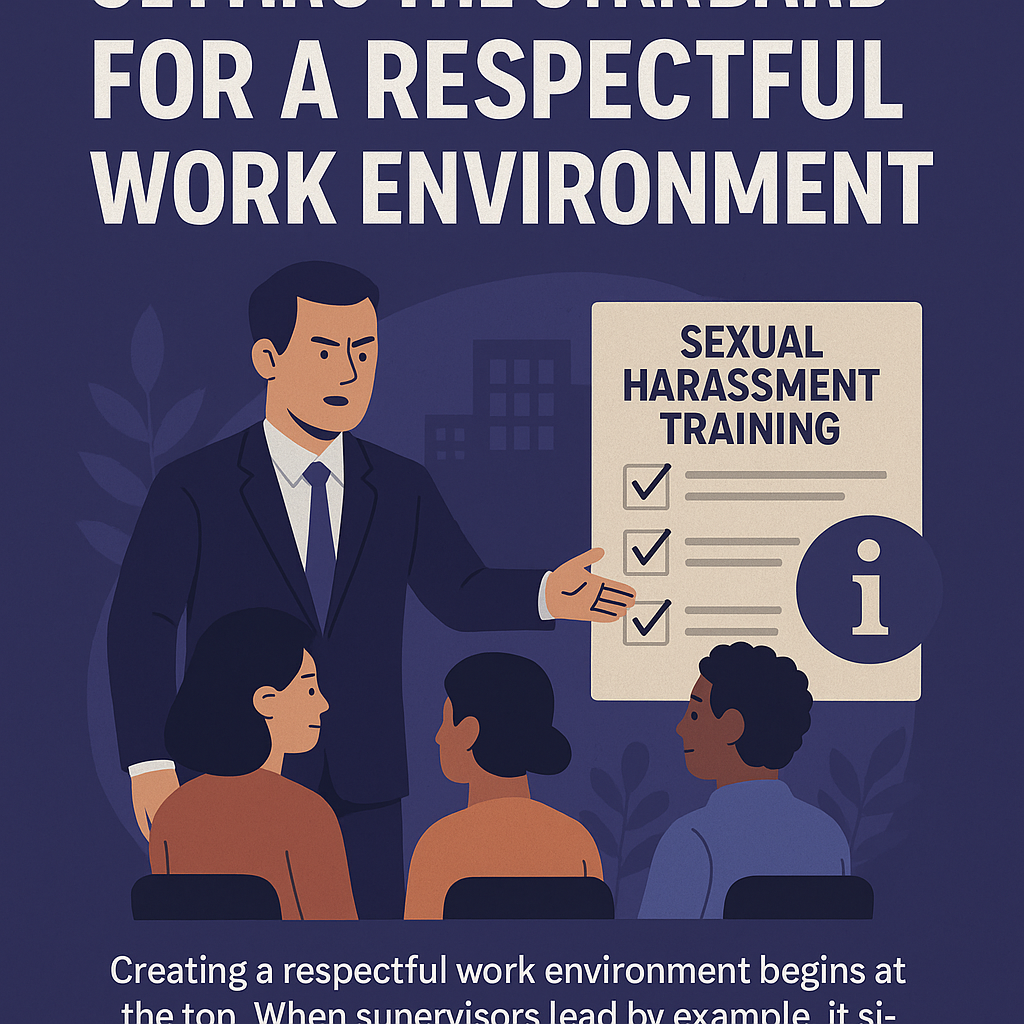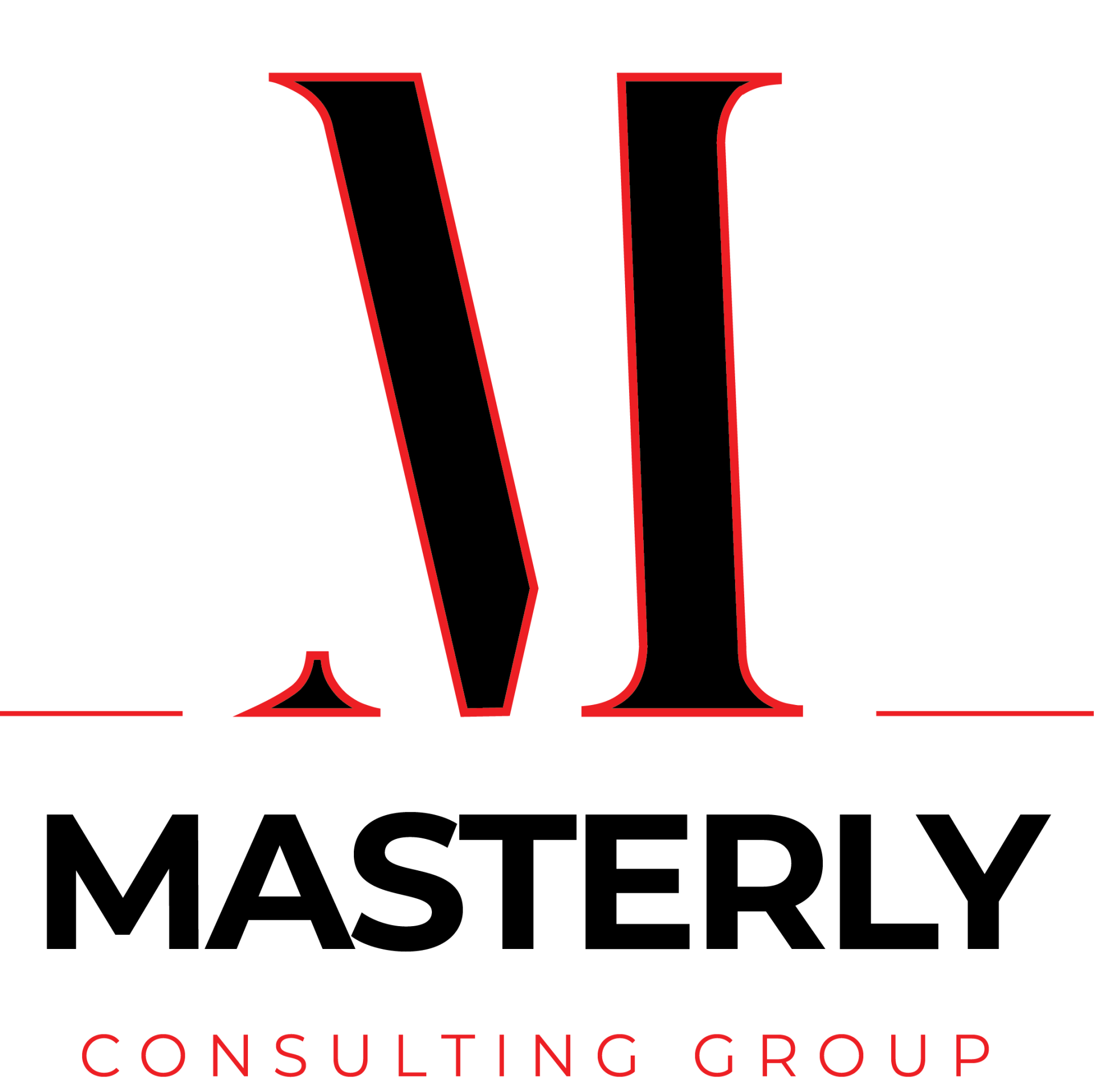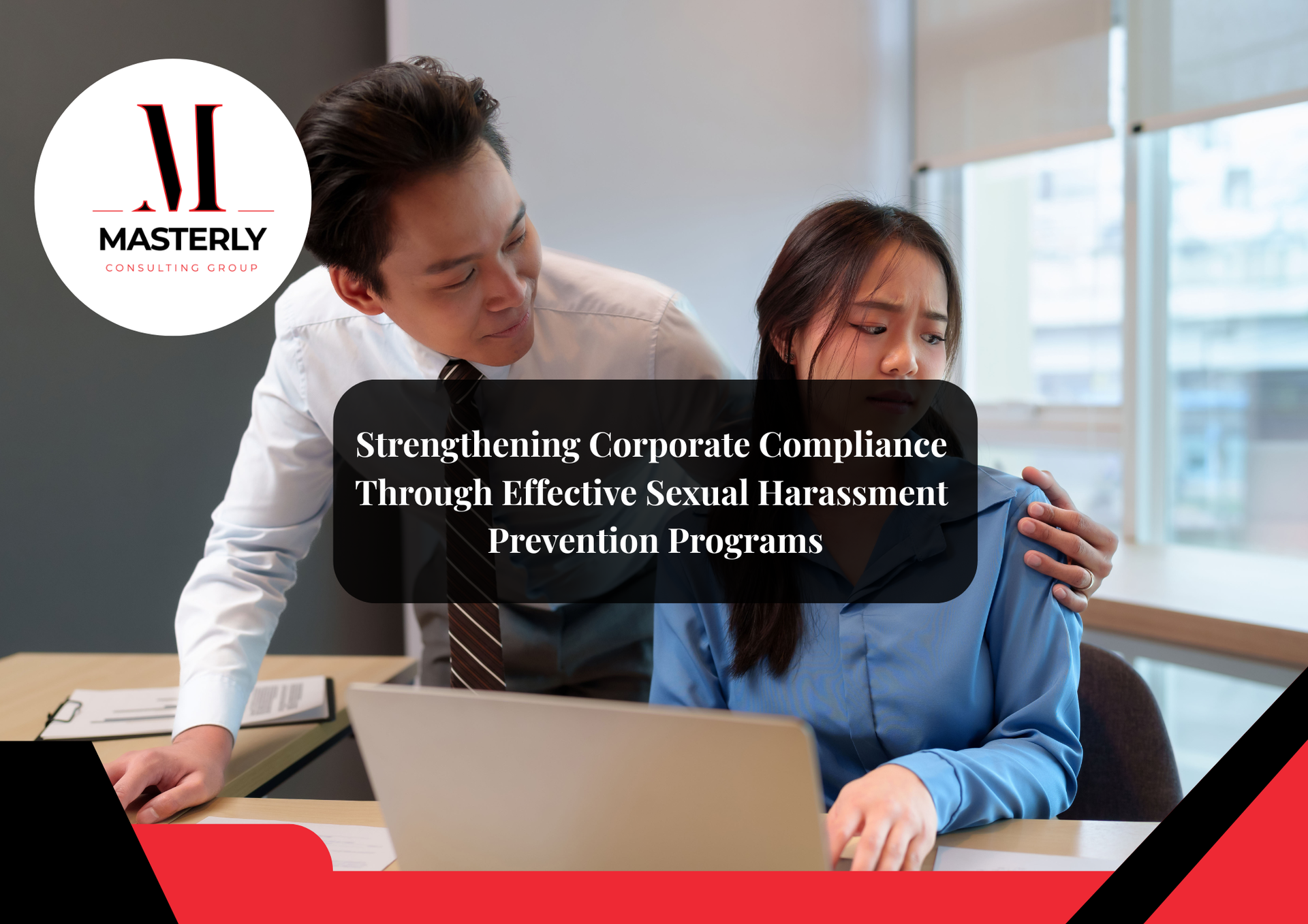Strengthening Workplace Policies with Sexual Harassment Training for Supervisory Roles
Setting the Standard for a Respectful Work Environment
Creating a respectful work environment begins at the top. When supervisors lead by example, it signals to the entire workforce that professionalism, respect, and safety are expected. For many organizations, this foundation is built and reinforced through sexual harassment training for managers—not as a checkbox activity but as a long-term cultural strategy.
The most effective policies start with understanding the difference between compliance and prevention. Teaching supervisors how to identify, address, and prevent harassment ensures they’re equipped to lead teams with integrity and accountability.
Why Supervisory Training Matters
While all employees benefit from training, managers have unique responsibilities. They are often the first to respond to complaints or observe inappropriate behavior before it escalates. Sexual harassment prevention training for those in leadership plays a key role in creating proactive, not reactive, leadership.
When supervisors are trained in workplace harassment prevention training, it reduces the risk of unlawful harassment, discrimination, or retaliation claims. This isn’t just smart—it’s essential for staying compliant with both federal and state regulations.
Compliance and the Law: Understanding Your Responsibility
Employers across the U.S. are held accountable under laws like Title VII, requiring consistent efforts to prevent harassment and address workplace harassment promptly. California, Illinois, and New York City employers are even more strict, with mandates around annual training, recordkeeping, and inclusion of specific training content.
If your company has one or more employees, you're likely obligated to provide harassment prevention training. Failure to do so opens the door to investigations, penalties, and lawsuits—all of which can be avoided through structured, effective training programs.
What Makes Sexual Harassment Training Effective?
Effective training must be more than a boring presentation. To shift behavior, sexual harassment training should include:
- Clear definitions and examples of harassment
- Guidance on how to respond to complaints
- Scenarios involving offensive jokes, intimidation, or unwanted advances
- Clarification on company policies and employee responsibilities
- Tools for conflict resolution and respectful communication
It should also be interactive, easy to access on a mobile device, and updated with current laws, real-world examples, and key concepts.
The Importance of Inclusion and Respect
Inclusion training complements harassment training by reinforcing the values of respect, empathy, and fairness. These aren't abstract principles—they are workplace essentials. An inclusive team not only follows the law but also functions with higher morale and lower turnover.
Leaders trained in sexual harassment prevention are more likely to model ethical behavior and engage their teams in meaningful, compliant work environments.
Online Training: Accessible and Scalable
Modern online training options allow employers to deliver consistent messaging across departments, locations, and even other states. Digital platforms ensure that new employees, non supervisory employees, and managers receive the same high-quality instruction regardless of where they’re located.
The best online training includes technical support, certification tracking, and customizable course content. It should offer additional information such as links to company policies, complaint forms, and guidance documents.
Starting Early with New Hires
Sexual harassment prevention training shouldn’t be reserved only for long-term team members. Integrating it into your start date onboarding process ensures new employees know what's expected from day one. This sets a consistent tone for behavior and accountability.
Welcoming team members into a workplace that takes compliance, ethics, and respect seriously has long-term cultural and legal benefits.
Training Supervisors to Respond, Not React
One of the most valuable parts of workplace harassment training is giving supervisors the tools to take appropriate, timely action. They must know how to:
- Respond to informal concerns
- Escalate serious incidents
- Support both complainants and the accused during an investigation
- Maintain confidentiality and prevent retaliation
These leadership behaviors can make or break the company’s ability to comply with employment laws and prevent harassment altogether.

Building a Harassment Prevention Culture
A single training session won’t create change overnight. That’s why the most forward-thinking organizations treat harassment prevention training as an ongoing effort. This includes hosting refreshers, providing annual training, and reinforcing expectations through regular communication.
This consistent reinforcement builds a stronger workplace culture—one where policies aren’t just words on a page, but lived every day in how employees treat one another.
Creating Safe Spaces for Reporting
Encouraging employees to speak up is a key step in stopping harmful behavior. This requires not only a safe process but trained leaders who understand their responsibilities under internal policy and the law.
Clear instructions on how to report concerns, what forms to complete, and what outcomes to expect help minimize confusion and build confidence in the system.
Customizing Training for Real Impact
Not every workplace faces the same challenges. A law firm may deal with very different dynamics than a hospitality group. That’s why your sexual harassment training for managers should be customized to your workforce, industry, and company size.
Tailored examples, legal references, and scenario-based learning increase retention and reduce future incidents.
Engaging Training Improves Retention
Training that uses stories, real-life examples, and interactive questions makes it easier for people to remember and apply what they’ve learned. Modules that feature scenario-based choices help employees practice responses before they’re needed in real life.
These strategies enhance training content and ensure lessons stick—especially in high-stakes environments.
Addressing Subtle Forms of Harassment
Not all harassment is obvious. Offensive jokes, nonverbal cues, or repeated microaggressions based on national origin, gender, or race can be equally harmful. Training should teach how to spot and address workplace harassment that may go unnoticed or unreported.
By tackling both overt and covert behaviors, your team is better prepared to foster inclusion and prevent harassment across all levels.
Supervisors as Cultural Influencers
Supervisors play a huge role in modeling the behavior they expect from others. They help shape the workplace culture, influence daily interactions, and set the tone for professionalism. When they are well-trained, they naturally enforce the company’s sexual harassment prevention policy.
Their presence, conduct, and communication reinforce the idea that everyone deserves a safe and respectful place to work.
Meeting Legal Requirements Without Losing Engagement
Legal mandates often require specific key features in harassment training, such as definitions, complaint processes, and retaliation policies. But just meeting requirements isn’t enough—training must also be engaging, relevant, and easy to complete.
Delivering training that checks all the compliance boxes while also engaging your team is the key to changing behavior, not just meeting a rule.
Supporting a Diverse Workforce
Today's workforce is increasingly diverse, with varying values, beliefs, and expectations. Good training emphasizes inclusion, clarifies responsibilities, and shows how to manage conflict resolution through respectful communication.
Respecting differences is not just the right thing to do—it’s also legally wise and operationally efficient.
Train to Comply—and Lead by Example
To comply with federal and state mandates, employers must go beyond basic policy distribution. They need to implement consistent, high-quality sexual harassment training that educates managers and staff about expectations, rights, and reporting procedures. Compliance is the legal baseline—but leadership in this space builds stronger teams and reduces internal conflict.
Training helps organizations not only comply with the law but also demonstrate a proactive commitment to safety, ethics, and accountability. When leaders understand their role in harassment prevention, they foster a workplace that’s both legally sound and culturally strong.
Staying Ahead of Changing Regulations Requires Ongoing Training
Employment laws and harassment regulations aren’t static—they evolve regularly at both the state and federal level. For employers in states like California, New York, and Illinois, recent updates to required sexual harassment prevention training illustrate how quickly expectations can shift. Failing to stay current puts your business at legal and reputational risk.
Regularly updating your training programs ensures compliance with these regulations, while also helping managers understand their obligations under evolving laws. It's not just about avoiding penalties—it's about protecting your employees and your brand.
Harassment and Discrimination Often Go Hand in Hand
While sexual harassment is a serious concern on its own, it often overlaps with broader issues of discrimination in the workplace. Employees may face biased treatment based on gender, race, national origin, age, or disability—all of which are protected under federal law. Without proper training, supervisors may unintentionally contribute to these behaviors or fail to recognize them when they occur.
Incorporating education on discrimination into your harassment prevention training gives leaders a more comprehensive understanding of what unlawful conduct looks like. It empowers them to prevent harassment, correct behavior early, and support a truly equitable workplace.
Workplace Harassment Prevention Training Is a Leadership Priority
Today’s organizations can’t afford to treat workplace harassment prevention training as optional or occasional. This training is a foundational element in building a safe and inclusive environment where all employees can focus on their work without fear of mistreatment or bias. It’s especially crucial for managers, who are responsible for setting the tone and taking action when issues arise.
When done well, workplace harassment prevention training not only reduces legal liability—it strengthens team morale, builds trust in leadership, and reinforces a company’s commitment to ethical standards. It shows both current and new employees that respect isn’t just policy—it’s practice.
Optimize Every Page for Clarity and Compliance
Each page on your website should serve a clear purpose—whether it's educating employees, offering legal guidance, or promoting your training services. For example, a dedicated sexual harassment prevention training page should include relevant policies, state-specific mandates, and easy registration options. Clear calls to action, intuitive navigation, and search engine-friendly content ensure users find what they need while helping you rank higher in search results.
An optimized page doesn’t just inform—it converts. Whether you’re targeting HR professionals, legal teams, or small business owners, make sure every page aligns with your overall message and compliance objectives.
Workplace Harassment Training Protects Teams and Minimizes Legal Risk
Providing structured, consistent workplace harassment training is one of the most effective steps an employer can take to foster a respectful and legally compliant environment. It goes beyond general instruction by teaching staff how to recognize, report, and respond to inappropriate behavior—before it escalates into a larger issue.
Whether you're managing one or more employees or overseeing a national team, the right workplace harassment training helps everyone understand boundaries, reporting protocols, and the consequences of misconduct. Investing in it sends a clear message: your organization prioritizes respect, safety, and accountability.
Contact Us for Customized Harassment Prevention Training
Every organization has its own workplace culture—and its own set of challenges. At The Masterly Consulting Group, we specialize in helping employers create comprehensive policies and deliver effective harassment prevention training tailored to your team’s needs. Whether you operate in California, Illinois, New York, or anywhere else across the U.S., our custom training programs align with both state regulations and federal compliance standards.
If you're ready to strengthen your company’s culture, reduce legal risk, and empower your team through engaging, personalized learning experiences, we’re here to support you. Call us today at (888) 209-4055 for a free consultation. Let us help you implement a proactive, results-driven training solution that protects both your people and your organization.
The Missed Opportunities of Not Using HR Consulting Services for Small Business Performance Tracking







